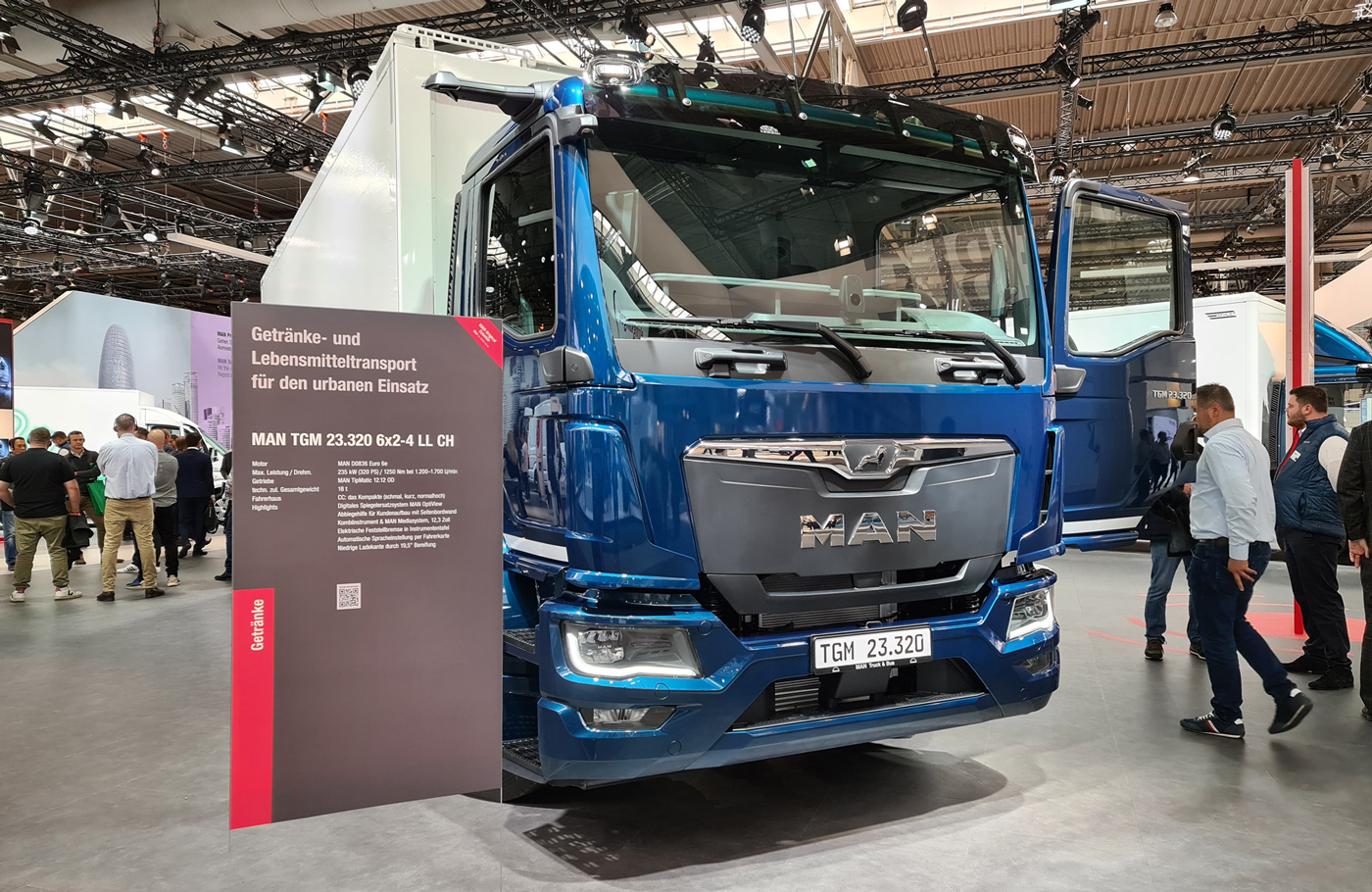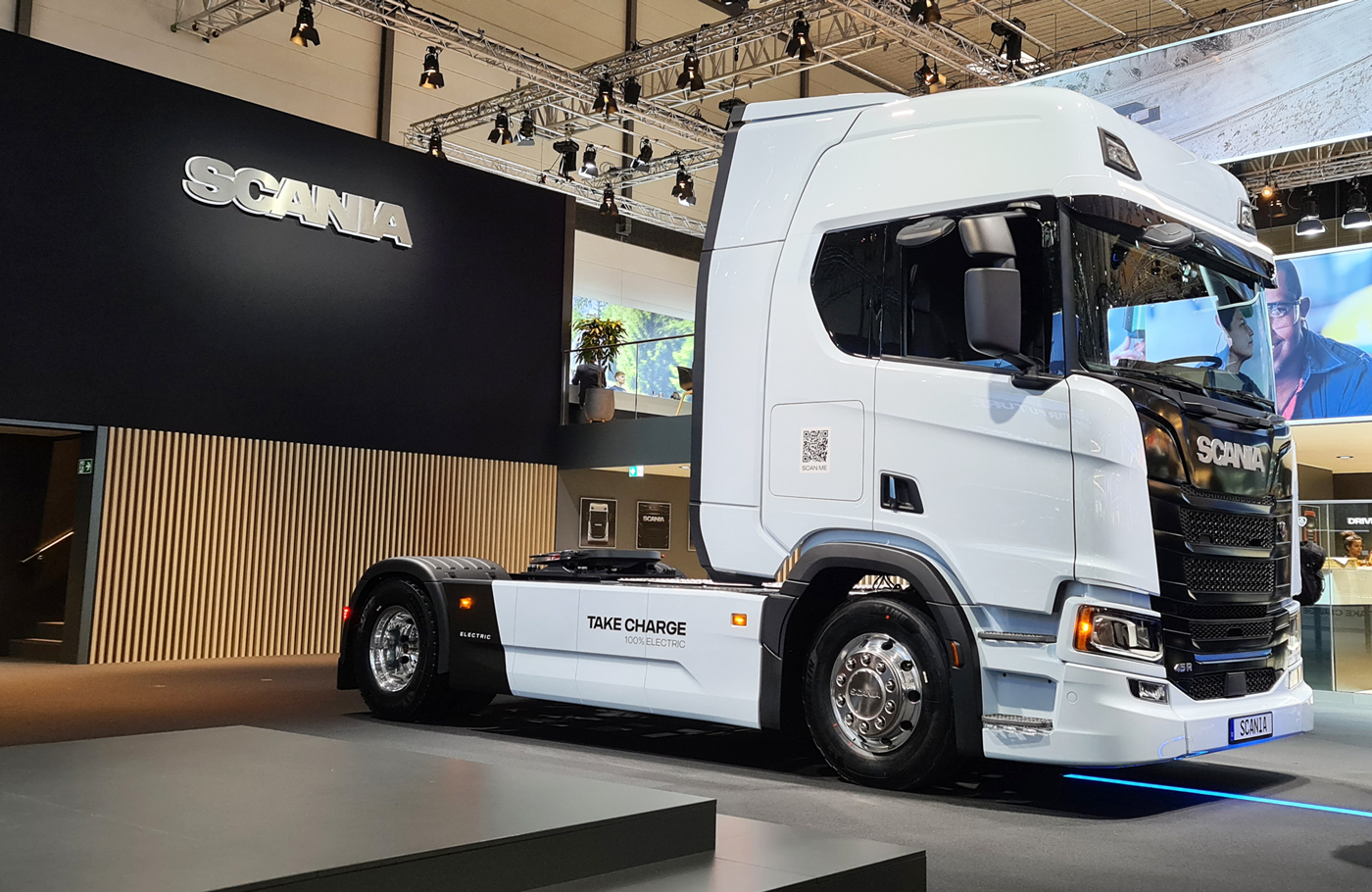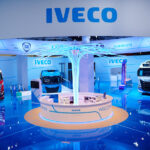Zero emissions to the fore
Zero emissions to the fore
The IAA Transportation 2022, which took place last month, was an all-new iteration of the show, covering the entire transport and logistics spectrum. CHARLEEN CLARKE travelled to Hannover, Germany, to explore the latest transport technology – and discovered an overwhelming obsession with zero emissions.
While South Africans fret about load shedding, crime, and unemployment, the global agenda is somewhat different: it’s all about zero emissions. At the IAA – organised by the Verband der Automobilindustrie (VDA) – this subject has always come to the fore, but never more so than at this year’s fair. It was hard to find a stand that did not focus on sustainability. It’s logical, really. This is, after all, the word on everyone’s lips in first-world countries.
Visitors were accordingly treated to a plethora of electric and fuel-cell vehicle launches. As VDA president Hildegard Müller noted, among the numerous world firsts presented, the most important focus was on innovations relating to the electrification and climate neutrality of the powertrain. “The industry is resolutely driving forward the biggest transformation in its history and is thus making an important contribution to solving the challenges facing society. The transport and logistics industry is now taking innovation to the road – the climate neutrality mission is in full swing,” she pointed out.
DAF launches distribution trucks and fully electric powertrains
DAF launched the New Generation DAF XD and XDC at the IAA Transportation 2022, as well as revealing a completely new series of fully electric powertrains for the New Generation DAF XD and XF trucks. These new trucks have ranges of over 500 km on a single charge. The New Generation DAF XD is said to set the benchmark in its class for safety, efficiency, and driver comfort. The cab design of the XD features an expansive windscreen and large side windows with an ultra-low belt line for best-in-class direct vision. This is achieved in combination with the low cab position (17 cm lower than the New XF) and the new Vision Dashboard, which is characterised by being contoured towards the windscreen on the co-driver’s side.
First-class fuel efficiency and low CO2 emissions are realised through the aerodynamic cab. Market-leading vehicle efficiency is furthered by the new Paccar MX-11 engine, smart exhaust after-treatment system, low vehicle weights, standard TraXon automated transmission, and sophisticated driver assistance systems. The extensive availability of PTOs, body attachment modules, and connectors ensure first class bodybuilder-friendliness. The New Generation DAF XD will be available in Europe in a full array of 4×2 and 6×2 axle configurations (both truck tractors and rigids), with production set to commence shortly.


DAF also presented the New Generation DAF XDC and XFC. These construction vehicles feature single or double drive two, three, and four axle configurations to meet specific requirements of the vocational and construction segment.
In keeping with the IAA’s zero-emission focus, DAF launched the New XD and XF Electric trucks (truck tractor and rigid models). They are equipped with Paccar e-motors that deliver outputs from 170 to 350 kW (230 to 480 hp).
The New Generation XD and XF Electric can be fast charged with powers up to 325 kW, allowing a three-string battery pack to be boosted from zero to 80% of its capacity in just over 45 minutes. An onboard charger with the capability of alternating current (AC) charging up to 22 kW is available as an option.
The electric trucks will be assembled on a new production line in Eindhoven, with series production starting in 2023.
Daimler Truck unveils eActros LongHaul
Daimler’s stand was all about CO2-neutral transport; it presented an abundance of new zero-emission products, with the highlight being the eActros LongHaul. In addition, Daimler showed the Mercedes-Benz eActros 300 in a new version (as a tractor unit) and announced the Mercedes-Benz eAtego for the medium-duty segment, while the Fuso Next Generation eCanter made its European debut (the truck was launched globally in Japan at the beginning of September).
Martin Daum, CEO of Daimler Truck, noted that it is a case of all systems go when it comes to zero-emission transportation. “Since the last IAA four years ago we have moved forward at full speed with the transition to CO2-neutral transport. This year we already have eight pure battery-electric series-production vehicles in our portfolio. However, it’s not enough just to offer the right vehicles. Our customers also need the suitable infrastructure. We are active here at a wide variety of levels. For a rapid build-up, it is essential that the entire industry and governments pull together.”
Karin Rådström, CEO of Mercedes-Benz Trucks, did the honours when it came to the reveal of the eActros LongHaul (which actually happened twice – once during the media evening and again during the press conference the following morning). “We are continuously expanding our portfolio of battery-electric trucks. Our focus is on offering clear advantages to our customers. Therefore, our electric trucks are specifically designed for e-mobility, giving them better drivability, energy efficiency, and durability,” she pointed out.
The eActros LongHaul was shown to the International Truck of the Year jury ahead of its launch (read all about this on page 48 of this issue of FOCUS). The truck boasts up to three battery packs that provide an installed total capacity of over 600 kWh. Two electric motors, as part of a new e-axle, generate a continuous output of 400 kW and a peak output of over 600 kW.
Development engineers at Mercedes-Benz Trucks are designing the eActros LongHaul so that the vehicle and its components meet the same durability requirements as a comparable conventional heavy long-distance Actros – that means 1.2 million kilometres on the road over a period of 10 years.
Significantly, the batteries used in the eActros LongHaul employ lithium-iron phosphate cell technology. These are characterised above all by a long service life and more usable energy. The batteries of the production eActros LongHaul can be charged from 20 to 80% in well under 30 minutes at a charging station with an output of about one megawatt.
The first prototypes are already undergoing intensive testing and the eActros LongHaul will be tested on public roads this year. In the coming year, near-production prototypes will go to customers for testing.
The eActros 300 tractor unit that was shown to visitors can pull all standard European semi-trailers (taking into account the maximum permissible total length) and is based on the same technology as the eActros 300/400. Three battery packs, each with an installed capacity of 112 kWh, enable a range of up to 220 km on a single battery charge. Series production is planned for the second half of 2023.
While the eAtego launch is only expected in the next few years, production of the Next Generation eCanter will commence in 2023 (find out more on page 62).
“At Fuso, we are frontrunners in the electrification of commercial vehicles. Since the introduction of the small-series Fuso eCanter five years ago, we gained extensive experience and valuable feedback from customers running the trucks in daily operations,” noted Karl Deppen, CEO of Daimler Truck Asia, at the IAA. “With the Next Generation eCanter, we are now offering our customers tailor-made e-Mobility solutions for a broad range of applications. By taking the next step – extending our product portfolio and entering large scale production – we continue to lead the sustainable transportation of the future.”
Ford Trucks displays its first electric truck
Ford Trucks displayed its first all-new electric truck, which will play an important role when it comes to the company’s strategy to sell increasing volumes of electric vehicles. It has announced that 50% of Ford Trucks sales in Europe will be zero-emission vehicles by 2030. Furthermore, the company recently announced its aim to sell only zero-emission heavy commercial vehicles by 2040.
The team from Ford Trucks says the electric truck will offer many benefits in terms of energy, maintenance, and total ownership costs. Energy costs will halve (compared to internal combustion engine trucks) while maintenance costs are also likely to drop by two-thirds because electric vehicles have fewer moving parts that require maintenance. The total cost of ownership over a four-year period will be lower than that of a diesel truck, the company claims.
The new electric truck, which has a payload of 18 to 26 tonnes, is expected to go into production in 2024.
MAN reveals new eTruck
It seems as though 2024 is going to be quite some year! MAN displayed a near-series prototype of its new eTruck, which will also reach customers in 2024. A technical highlight of the future-oriented “electric lion” is its preparation for future megawatt charging: high charging capacities with short charging times make the electric truck suitable for heavy-duty long-haul transport with daily ranges of between 600 and 800 km. Up to 1 000 km is on the cards in the future, and the company believes that battery-electric vehicles offer the most suitable technology for future CO2-free commercial vehicle fleets. “For the next few years to come ‘e’ is the name of the game,” noted MAN CEO Alexander Vlaskamp.
The MAN eTruck will be suited to applications ranging from CO2-free long-haul transport of refrigerated food and low-noise and emission-free waste disposal in the city to the fully electric transport of materials to construction sites.
Electric trucks will, of course, be new to most transport operators, so adoption could be tricky. For this reason, the Bavarian truck maker also launched MAN eMobility Consulting at the fair. This service provides advice on the vehicle as well as consideration of customer-specific deployment conditions such as operating phases. This includes cost optimisation, route analysis, fleet optimisation, and the necessary advice on charging infrastructure based on these factors. Digital tools such as the new MAN eReadyCheck can support customers in checking how their delivery routes can be driven purely electrically. In addition, the MAN eManager allows fleet managers to keep an eye on the important charging information of all trucks in the fleet at all times.
MAN didn’t forget about internal combustion engines, either. It launched a new version of the D26 engine, which consumes up to 3% less fuel than the already very economical version, while at the same time offering an increase in torque and power.
Volvo shows new fully electric axle
Volvo Trucks lifted the lid on a completely new, fully electric rear axle at the IAA. This is big news because it translates into an even longer range for Volvo’s battery-electric trucks. Volvo Trucks has the widest offer of battery-electric trucks in the industry, with six different models in serial production.
The new e-axle allows even more batteries on the truck by integrating the electric motors and the transmission into the rear axle. More batteries mean longer range, which creates opportunities for long distance transport to also be electrified. On Volvo fuel cell electric trucks that will be introduced in the second half of this decade, the additional space comes in handy for installing other components.
“This is a breakthrough for electric trucks and a clear signal that there will be a huge demand for public fast-chargers for heavy trucks in the near future, not least along highways,” said Jessica Sandström, SvP Global Product Management at Volvo Trucks.
Volvo Trucks will start serial production of trucks with the new e-axle a few years from now.
Published by
Charleen Clarke
focusmagsa












